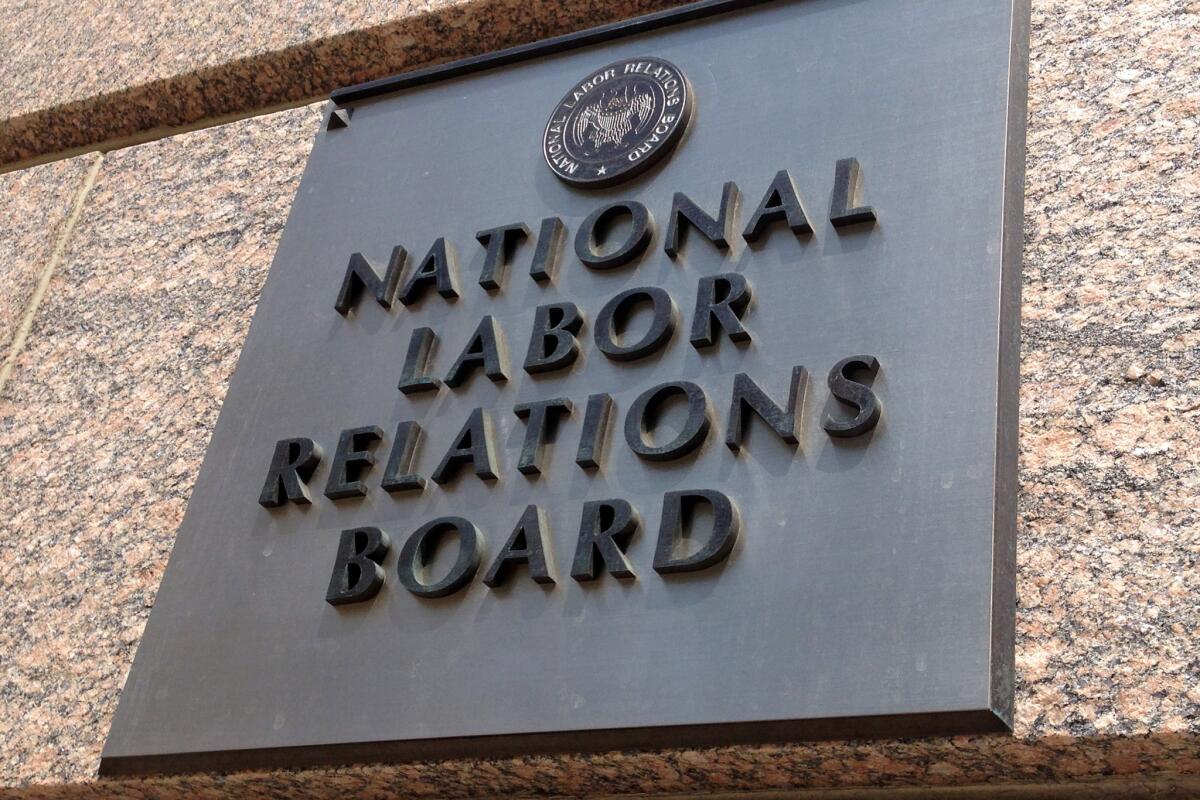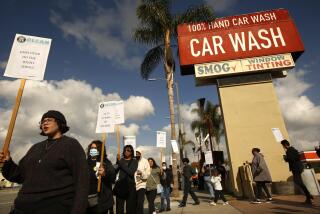Opinion: NLRB changes could speed up worker decisions on unions

It’s a relatively minor victory, given all the hurdles labor activists face in trying to organize workers, but a new ruling over access to workplace email systems should be heartening to those who support collective action by workers.
Recognizing the centrality of workplace email (look at it as the modern company bulletin board), the National Labor Relations Board overturned its own prior position and voted 3 to 2 (along party lines with a Democratic majority) that workers can use company email systems for organizing communications, so long as the communicating happens off the clock. The board wrote that it agreed with critics of its prior position:
“The consequences of that error are too serious to permit it to stand. By focusing too much on employers’ property rights and too little on the importance of email as a means of workplace communication, the Board failed to adequately protect employees’ rights under the Act and abdicated its responsibility ‘to adapt the Act to the changing patterns of industrial life.’”
The NLRB previously ruled in the 2007 Register Guard case that the businesses’ property rights concerns outweigh the workers’ rights. The new ruling flips that -- as it should. And the NLRB brings itself up to the contemporary workplace:
“The Board and the Supreme Court have recognized the workplace, and, when appropriate, a particular location in the workplace, as ‘the natural gathering place’ for employees to communicate with each other…. In many workplaces, email has effectively become a ‘natural gathering place,’ pervasively used for employee-to-employee conversations. Neither the fact that email exists in a virtual (rather than physical) space, nor the fact that it allows conversations to multiply and spread more quickly than face-to-face communication, reduces its centrality to employees’ discussions, including their Section 7-protected discussions about terms and conditions of employment. If anything, email’s effectiveness as a mechanism for quickly sharing information and views increases its importance to employee communication.
“The reluctance of the Register Guard majority to fully acknowledge the major role that email had already come to play in employees’ workplace communication -- including communication protected by Section 7 -- reflects a failure ‘to adapt the Act to the changing patterns of industrial life.’ But failure or not, we see no reason to perpetuate that now even more outmoded assessment of workplace realities.”
But what might help organizers even more is the NLRB’s decision to bar legal challenges by management before a union vote is taken, a tactic that has led to lengthy delays that work to management’s advantage. The new rules (available here, and it will take you a while to read) aim to streamline the process.
Anti-union folks are already up in arms about the decisions. An “amazing Christmas gift” for unions and a “lump of coal” for businesses, the Chamber of Commerce said. And a legal challenge is all but given. But these changes are good for the process. They eliminate some of the game-playing measures and let organizers, workers -- and management -- get to the crux of the matter faster, and on more even footing: Do the workers in a specific worksite want to be represented by a union, and bargain collectively over wages, benefits and working conditions?
The more efficiently that question can get asked and answered, the better for all.
Follow Scott Martelle on Twitter @smartelle.
More to Read
A cure for the common opinion
Get thought-provoking perspectives with our weekly newsletter.
You may occasionally receive promotional content from the Los Angeles Times.







